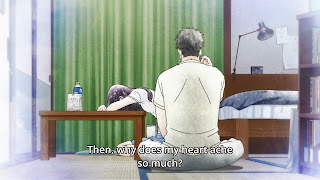Shingeki no Bahamut: Genesis Episode 1
The overall visual presentation of the Shingeki no Bahamut
premiere was superb. The most impressive part was the horseback chase scene. It
had that cinematic feel to it, not just in terms of dynamic camera work but rhythmic
and purposeful shot making.
Right from the very beginning, the scene puts the action on
top of the audience with a low angle tilt shot and a low level follow shot. The
camera being close to the ground produces a sense of speed, which is important
to a chase scene. The close view of the galloping horses and the dirt being
kicked up also enhanced the excitement of the scene.
The scene then cuts to an aerial overhead shot that pulls
back to an extreme wide to show the scale of the chase and the scenery. The
characters are then introduced through lateral tracking shots. The insert shot
of the horse reiterates the sense of speed. A second overhead shot from a
different angle gives us a view of the city, which establishes the setting.
Establishing the setting creates continuity with the shot of them jumping on
top of city roofs.
As you might have noticed, each shot served a purpose of
either establishing the mood or setting through visual storytelling. These
shots also weren’t overextended, there’s a great sense of rhythm and continuity
to these cuts. All of these elements combined made for a cinematic scene.


One thing that struck me about the opening low level follow shot is that it's going out of its way to imitate real film photography by putting those (virtual) dust splatters on the (virtual) lens 'filming' the shot. This isn't just imitating film shot composition, this is 'we want watchers to feel just like they're watching a live action film', as they could have shown the dust getting kicked up without having the splatters stick around.
ReplyDeleteThere's also a shaky cam effect too. People tend to frown on shaky cam and lens effects but when used moderately and correctly they can enhance an action scene.
Delete